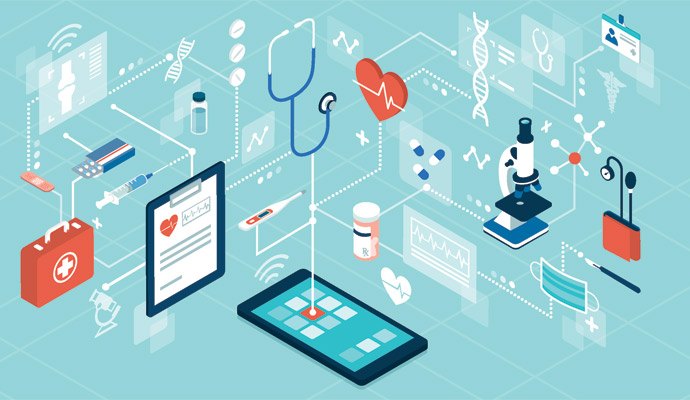Using Big Data to Prioritize Cancer Treatment During COVID-19
A new, web-based app draws on big data resources to create a personalized risk assessment for receiving cancer treatment during COVID-19.

Source: Getty Images
- The rapid spread of COVID-19 has threatened to overwhelm hospitals and health systems across the country, leading many providers to defer surgeries and other procedures for an unknown period of time.
For more coronavirus updates, visit our resource page, updated twice daily by Xtelligent Healthcare Media.
For patients with cancer, these delays are an especially delicate balancing act. Doctors have to compare the long-term risk of care postponements with the risk of patients potentially contracting COVID-19. Because these individuals’ immune systems are often compromised, it’s critical to weigh the need for treatment against the risk of COVID-19 exposure.
This is a challenging task, as cancer and coronavirus are both complex conditions requiring providers to gather and analyze big data resources.
During the pandemic, hospitals have been using a broad, three-tiered system to prioritize cancer care: treat, delay a little, or delay a lot. So far, there hasn’t been a comprehensive way for doctors to tailor cancer treatments to individual patients – until now.

READ MORE: How Will Big Data Analytics Factor into the Next Phase of COVID-19?
Data scientists and oncologists from the University of Michigan Cancer Center and the U-M School of Public Health have teamed up to develop a free, web-based application that helps assess the risk form of delayed treatment versus immediate treatment, based on patients’ individual characteristics.
With the OncCOVID app, doctors can identify patients whose risk from COVID-19 is outweighed by the benefits of immediate treatment.
“We noticed that we had these tiered systems that go by disease site and stage, but they don’t really consider anything else about the patient – factors like their age or their location,” Holly Hartman, lead researcher for the project and a doctoral student in biostatistics at U-M, told HealthITAnalytics.
“We wanted to take a more nuanced approach to deciding treatment for these cancer patients. Especially since we don’t know how long this pandemic will be going on, we need to better understand how delaying treatment is going to impact these patients. We developed this app to address that need.”
OncCOVID draws on large, national cancer datasets and county-level COVID data to adjust treatment plans to patients and their specific communities.
READ MORE: Big Data Dashboard Tracks COVID-19 Cases and Response in Indiana
“We did a thorough literature review to try to come up with some of the COVID-19 estimates. New information is being published about that continually, so finding the data that we needed required us to sift through the sources and see if what they had matched with what we had to plug in,” said Hartman.
“We’re constantly refining it to better reflect what is happening in the world and the data that’s being published.”
The app allows doctors to enter more than 45 characteristics about a patient, including age, location, cancer type and stage, treatment plan, and underlying medical conditions. After physicians enter all of the patient’s information, the app’s output tells them how long that patient will likely survive if treatment is immediate or delayed.
Using the restricted mean survival time (RMST) metric, physicians can determine the average time that a person will survive over a set endpoint. They can compare the differences between RMST values to decide what is best for the patient, Hartman said.
“If you run it and there’s only a day or two difference based on immediate treatment or delayed treatment, then it doesn’t make a big difference. But if there’s a hundred-day difference in how long the patient will survive, that’s a big difference. So, that patient might want to come in for treatment,” she explained.
In some cases, the personalized risk assessment could counter the widely-used, generic three-tiered model. Some otherwise healthy-seeming patients could actually have a higher risk of dying if their treatment is delayed, Hartman noted, and the highly individualized nature of the app could help physicians detect these patients.
Advanced features also allow users to adjust all of the app’s underlying statistical assumptions, such as the baseline mortality risk from COVID and the disease’s infection rate.
While the app was developed to assess cancer treatment risk, Hartman noted that the underlying model could apply to other conditions as well.
“A lot of the app, as it currently stands, is designed with cancer in mind, but it definitely could be expanded to different disease sites,” she said.
Going forward, the research team plans to further improve the app and underlying model, using the most up-to-date information on COVID-19.
“The next steps are going to be refining a lot of the estimates. We’re going to work on getting more nuanced estimates for delaying treatment, as well as cancer and overall survival. We’re also working on adjusting for age differently in those estimates, and then updating the COVID-19 model,” said Hartman.
“That’s a growing body of literature and we want to make sure that the default values that we’re using make sense given what we know about the progression of the disease. As more research comes out, we’ll want to include that information in our models and estimates to provide the best possible information to the patients and their physicians.”
Additionally, the group will aim to use the same big data model to examine the impact of treatment delays on cancer mortality on a broader scale.
“One of our plans is to try to estimate, on a national level, what the effects are of delaying treatment due to covid-19 using either the tiered approach – which most places are – or using this model,” Hartman concluded.
“We want to look at the metric of years of life lost, and how that changes based on what model we’re using. We’re aiming to apply that on a more global and national scale.”
